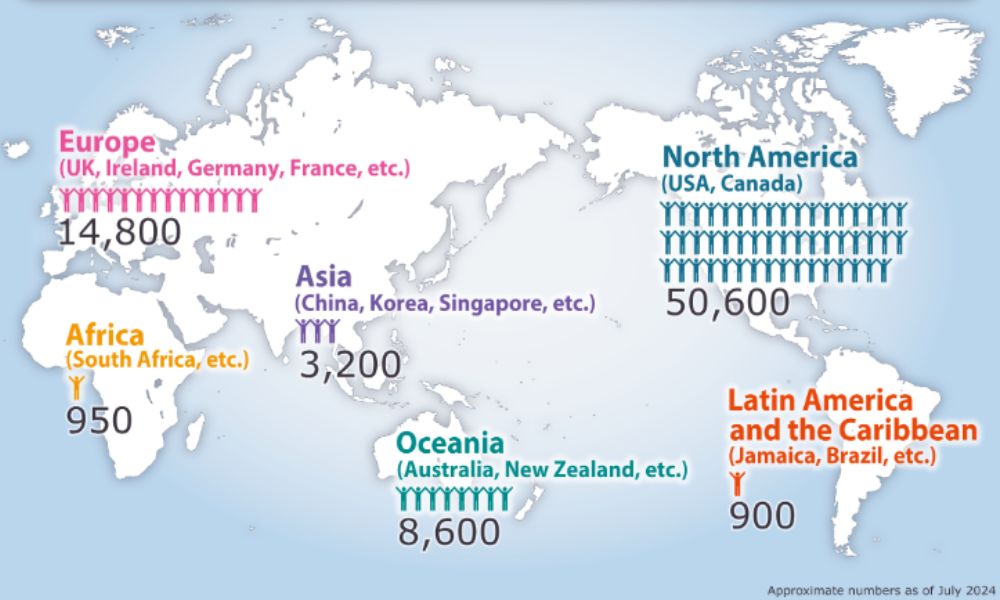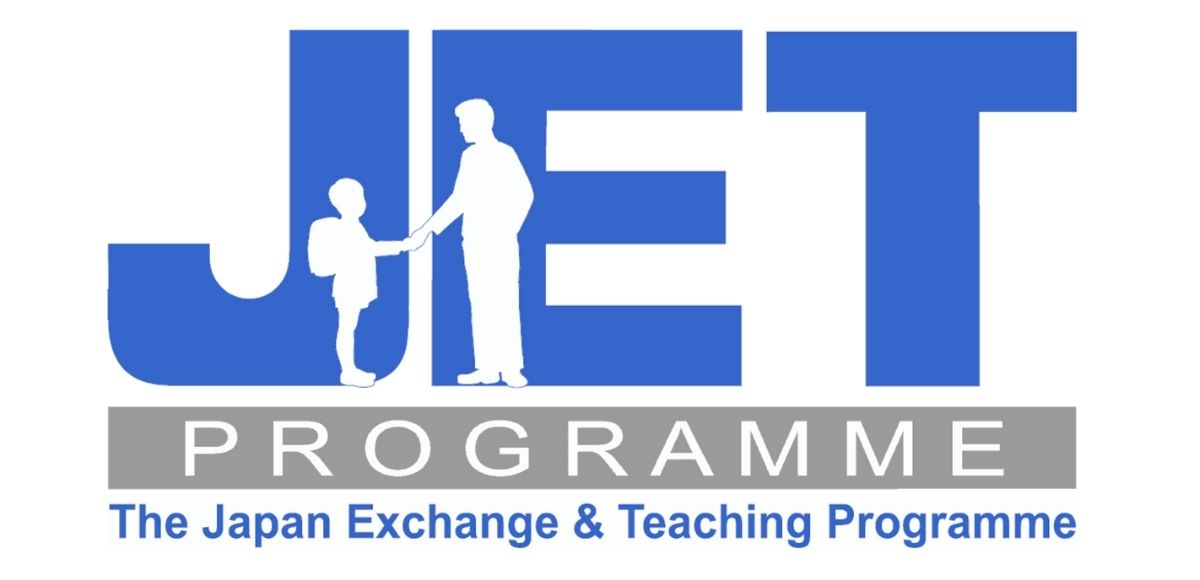
Teach English in Japan — JET Programme
With its rich history and unique blend of traditional and modern culture, teaching English in Japan provides opportunities to work in diverse settings, from bustling cities to tranquil rural towns.
Japan has long been a top destination for English teachers worldwide. The country’s commitment to improving English language education, coupled with the opportunity to immerse oneself in local communities and gain a deeper understanding of Japan’s vibrant culture, makes it an appealing choice for ESL teachers.
So, how do you get started with teaching English in Japan? Let’s take a look at some of the pathways available and how you can make the most of this exciting opportunity.
How to get started teaching English in Japan
If you’ve decided that you wish to start teaching English in Japan, then where do you start?
The two most common ways are:
- Having a company sponsor you with a work visa and permit.
- Apply and teach through the government-run JET Programme.
The first way is pretty straightforward. You first find a Japanese company that is willing to hire and sponsor your work permit and visa. They will then help you apply for all the required documents. Once everything is completed, you travel to Japan and start teaching.
This is of course a quite simplified version of the required steps. But it’s also the most common way to start teaching English in Japan. One thing that may be of concern if you are just starting out, is that you will have to take responsibility for a lot of the steps in the process.
This can be things such as finding accommodation, setting up bank accounts, learning how to file taxes, etc.
The only real support net you have to help you with things like this is the contracting company and the Japanese Embassy in your country. As you can probably tell, this might sound a little bit overwhelming if you are just starting out.
This brings us to the alternative way of getting started, which is teaching via the JET Programme.
What is the JET Programme?
The Japan Exchange and Teaching (JET) Programme was launched in 1987 as an international exchange program with the purpose of promoting internationalisation in Japanese local communities by helping to improve foreign language education. It aims to create grassroots-level cultural exchange between Japan and participating nations.
It is administered by the Japanese government, and it is currently one of the largest international exchange programs in the world. Through the JET program, the Japanese government invites young college graduates from all over the world to participate in internationalisation initiatives and language education in local Japanese schools and organisations.
Teaching positions
When applying to teach English with the JET Programme, you are able to apply to two different types of positions:

Participants that are employed as ALTs will be placed in schools or local boards of education. ALTs main job is to assist Japanese teachers with foreign language lessons, help prepare teaching materials and in extracurricular activities such as English clubs.
More than 90% of JET participants are ALTs.
Common ALT duties are:
- Assisting in foreign language classes taught in elementary, junior and senior high schools.
- Assisting in foreign language training activities in elementary schools.
- Assisting in the preparation of materials for teaching a foreign language.
- Assisting in the language training of teachers of a foreign language, etc.
- Assisting in extracurricular activities and club activities
- Providing information on language and other related subjects for people such as teachers’ consultants and foreign language teachers.
- Assisting in foreign language speech contests.
- Engaging in local international exchange activities.
- Other duties as specified by the contracting organisation.

Participants that are employed as CIRs will assist local government organisations in various international exchange activities. The requirements to work as a CIR are a little bit higher, as you are required to have a functional command of the Japanese language (equivalent to N2 or higher on the Japanese Language Proficiency Test).
CIRs can also teach English. The work duties for each CIR can differ a lot as they are related to the international activities carried out by the contracting organisation.
Common CIR duties may include:
- Editing, translating and compiling brochures into a foreign language.
- Assisting in planning, designing and implementing international exchange programmes including international economic exchange programmes.
- Assisting in hosting official guests from abroad and interpreting at events for overseas visitors or for local foreign residents in the community.
- Assisting in language instruction of employees of the contracting organisation and local residents.
- Assisting with and participating in the activities of local private groups or organisations engaged in international exchange.
- Assisting in exchange activities (including school visits) related to local residents’ cross-cultural awareness and understanding as well as in supporting activities for foreign nationals residing in Japan.
- Other duties as specified by the contracting organisation.

Benefits of teaching English via the JET Programme
Launching your English teaching career in Japan with the JET Programme is a great way to get a smooth start as you will be given a lot of benefits and support throughout the whole process.
As the JET Programme is a government-sponsored programme, and not a business or language school, the goal of the programme is not profit-oriented. Instead, the focus is on promoting internationalisation in Japan’s local communities by helping them improve foreign language education and promoting international exchange at the community level.
This helps ensure that you will be well taken care of when teaching via the JET Programme.
Here are some of the perks of teaching via JET:
- Remuneration: JET Programme participants receive a remuneration of approximately 3.36 million yen for their first year of appointment. Remuneration increases with subsequent appointments.
- Holidays: Saturday, Sunday, Japanese national holidays, paid leave (at least 10 days). Due to work circumstances, JET Programme participants may be asked to work during weekends and national holidays.
- Work Hours: 35 hours per week, standard (typically Monday to Friday)
- Free online Japanese language course for different levels is provided.
- Insurance: Covered by Employees’ Health Insurance, Pension Insurance, Employment Insurance, and JET Accident Insurance to reduce the costs of medical expenses and personal liability incurred due to injuries or illnesses.
- Japanese courses: JET participants have access to free Japanese language courses to help them improve their Japanese capabilities and knowledge about Japanese culture.
- Teacher training: ALTs have access to the Basic Online ALT Training System (BOATS) to help them acclimate to and thrive in their roles in the Japanese educational system
- Counselling: Access to free online counselling services and partially subsidized (50%, up to ¥30,000 per year) counselling with mental health professionals in Japan or abroad not covered by health insurance.
- Career support: Participants have access to career support for the next step in their careers after JET.
More specific details will be provided during the application process.

Who can teach via the JET Programme?
General criteria
In order to be eligible for teaching English through the JET Programme, applicants must:
- Hold a Bachelor’s degree or higher, or obtain it by the designated arrival date. (Applicants for the ALT position may alternatively hold a certification for completing a 3-year course to teach at primary/secondary schools.)
- Be a national (not just a permanent resident) of the country where the application is submitted. Applicants with Japanese citizenship must renounce it before submitting the Reply Form. Those with multiple nationalities can apply as a national of one country only.
- Not have lived in Japan for six or more years since 2014.
- Not have participated in the JET Programme since the 2021 intake, or for more than 6 years in total.
- Not have declined a JET position after receiving an assignment offer in the previous year, unless a valid reason was provided.
- Have proficiency in contemporary standard pronunciation, rhythm, and intonation of the designated language and possess strong language skills that can be applied accurately and appropriately.
- Be interested in Japan and willing to deepen your knowledge and appreciation of the country after arrival. Be motivated to participate in international exchange activities in the local community and make efforts to study or continue studying Japanese before and after arriving in Japan.
- Be willing and able to adapt to living and working in Japan, and commit to fulfilling your duties throughout the program.
- Be mentally and physically healthy.
- Have a desire to maintain relations with Japan after completing the Programme.
- Agree to reside in Japan under the status of residence specified in Article 2-2 of the Immigration Control and Refugee Recognition Act.
- Be willing to follow all Japanese laws.
- Applicants with a suspended jail term must have completed their probationary period before applying.
Additional criteria for ALT applicants
In addition to the above general criteria, ALT applicants must:
- Be interested in the Japanese education system, particularly foreign language education in Japan.
- Be interested in working with children.
- Be qualified as a language teacher or be strongly motivated to take part in the teaching of foreign languages.
Meriting qualifications
The following qualifications are not part of the official eligibility criteria, but they will give additional consideration to applicants who:
- Have language teaching experience or qualifications (e.g. TESOL/TEFL certificates).
- Have general teaching experience or qualifications.
- Have a high level of Japanese language ability.
⚠️Note: In the case of English-speaking countries (United States, United Kingdom, Australia, New Zealand, Canada, Ireland, South Africa, Philippines, Singapore, Jamaica, Barbados, Trinidad and Tobago, etc.) the designated language is English.
For France, it is French, for Germany it is German, for China it is Chinese, for Korea it is Korean, and for other non-English speaking countries, it is the principal language spoken in that country. However, there may be cases where English is required as well.
Applicants from non-English speaking countries must have a functional command of the English or Japanese language.
To view the full eligibility criteria, please visit the official website or contact your local Japanese Embassy/Consulate.

Participating countries
Since the beginning of the JET Programme, there have been more than 79,000 participants from 50 countries around the world.
To see which countries are participating in the JET Programme for the 2025 semester, please visit the official website or contact your nearest Japanese Embassy/Consulate.
⚠️ Citizens of non-participating countries and some specific participating countries can only apply to the JET Programme if a local government in Japan has specifically requested a participant from that country.
For full information about eligibility for the 2024-2025 JET Programme, please visit the official website.
Can non-native speakers participate?
Whether or not a non-native speaker is eligible to participate in teaching English via JET, depends on the individual person’s situation and qualifications. Please reach out to the Embassy or Consulate General of Japan in your country of citizenship to see if they have any JET Programme positions available.
Do you need a TESOL/TEFL certificate?
While an English teaching certificate such as a TESOL/TEFL certificate is not an official requirement for participating in the JET Programme, having such certifications will be an asset during the selection process.
Do you need teaching experience?
No teaching experience is needed for participating in the JET Programme. However, just like with the teaching certificates, having prior teaching experience will be an asset during the selection process.
Is there an age limit?
There is no age limit as long as applicants meet all other eligibility criteria. Applicants will also be judged on maturity, professionalism, and ability to adjust to other cultures.
Getting your TESOL/TEFL certificate: Improve your chances of being accepted into the JET Programme by becoming TESOL/TEFL certified.
If you haven’t enrolled in the course you can do so here:
.
Where can you teach with the JET programme?
JET Programme participants are appointed to teaching positions in local government organisations and schools by the participating prefectures and municipalities throughout Japan.
Your work activities are based on need, and they are independently decided by the prefectural governor, city/town mayor and contractual organisation. Although the organisations involved in the JET Programme are primarily local government authorities, JET Programme participants may also be placed in private schools when there is a request.
Placement requests are sometimes possible, but not guaranteed.
There are currently approximately 1,000 local public organisations (organisations that are contracted via JET), 45 prefectures and 18 designated cities that employ JET Programme participants.
When does the JET Programme start?
The recruitment, application, and selection process for new JET participants is conducted by the Japanese Ministry of Foreign Affairs through its embassies and consulates in participating countries.
Application start and deadline:
Applications for the JET Programme generally open in early fall (around September or October). However, since the application process is managed individually by each Japanese Embassy and Consulate, the starting date may vary between countries.
To confirm the specific application start and deadline for your country, please contact the Embassy or Consulate General of Japan in your country of citizenship.
JET Programme start:
When a candidate has been accepted and received a placement, they are expected to arrive in Japan during spring or summer.
How long can you teach via the JET Programme?
If you get accepted into the JET Programme, you are required to teach for 1 year. There is a possibility to extend your contract if both you and the contracting organisation are in agreement. This can be done twice, meaning that you can teach via the JET Programme for a total of 3 years.
💡 If a JET participant’s work performance is deemed to be of an exceptionally high standard, they may be able to get reappointed an additional two more times, extending it to a maximum total of 5 years on the JET Programme.
How do you apply?
To apply for the JET Programme as an Assistant Language Teacher (ALT), you need to reach out to the Japanese Embassy or Consulate in your country of citizenship to see if they are accepting applications.
It’s worth noting that the application process for the JET Programme is quite demanding and can take several months. Applicants should also give serious thought to whether they are prepared to commit to living and working in Japan for at least one year.
However, if that’s not an issue, and you are able to successfully obtain a spot, the benefits are well worth all the effort.
For more information about the JET Programme, such as the application process, please visit the official JET Programme website or contact the nearest Japanese Embassy or Consulate in your home country.
Feel free to also view the JET Programme leaflet and their Q&A section for more information about the program.







Leave A Comment